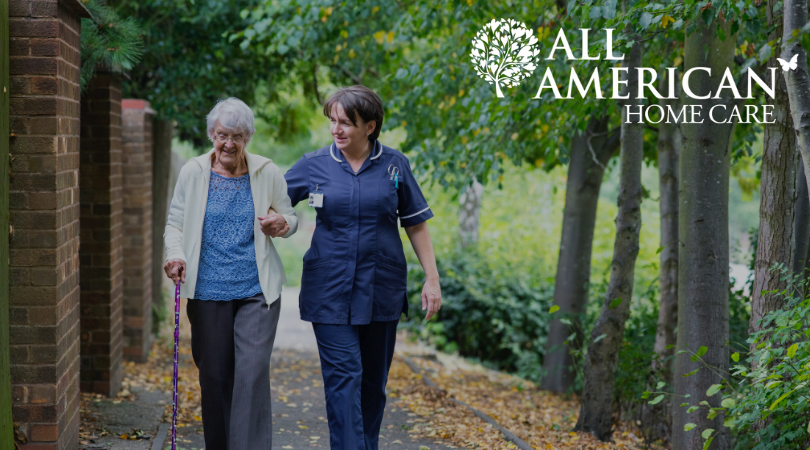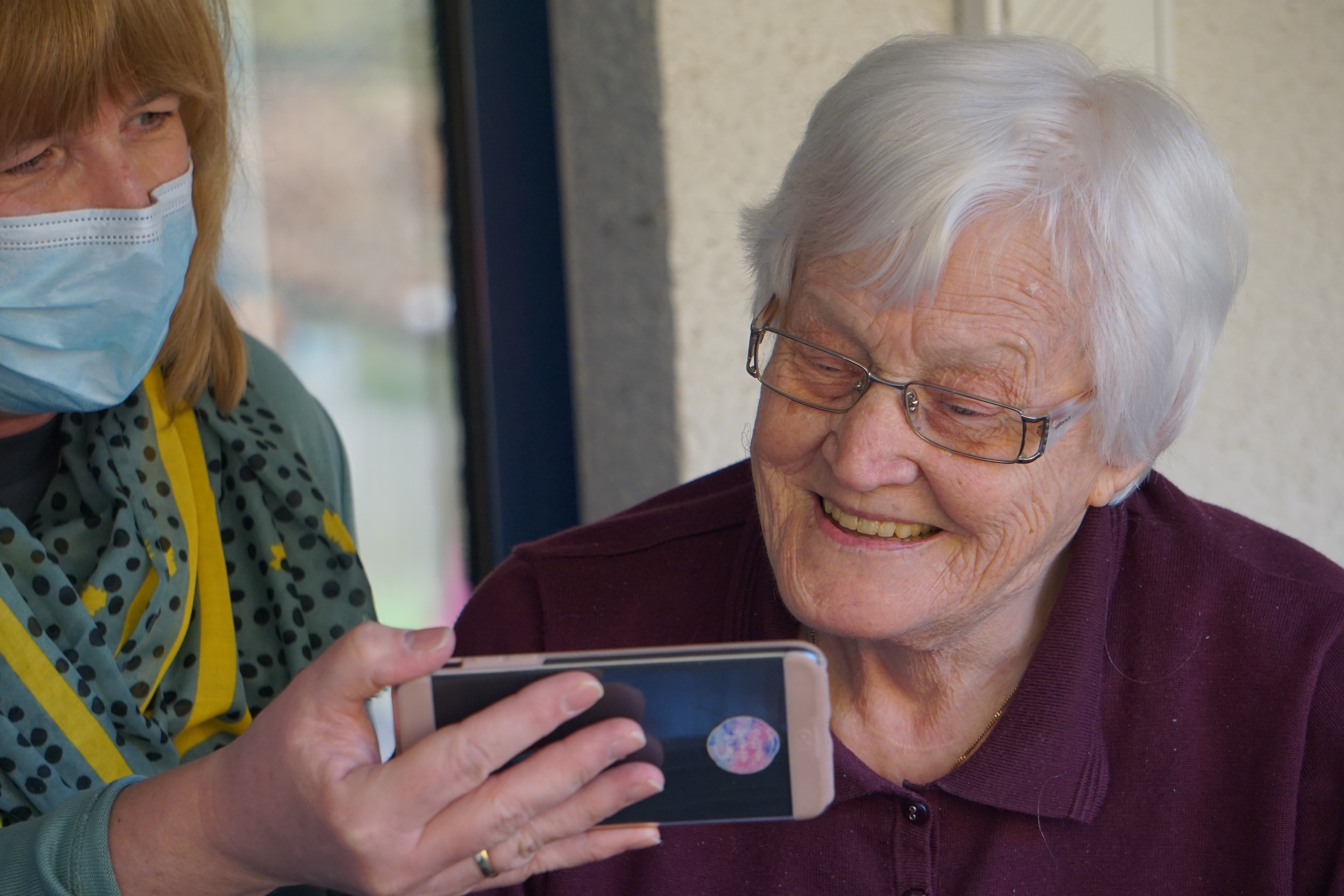
Caregiver vs. Caretaker
- Caregiver vs. Caretaker: What Do You Want to Be?
- What Is the Difference Between Caregiving and Caretaking?
- Who Is a Caregiver?
- What Do Caregivers Do?
- Who Is a Caretaker?
- What Does a Caretaker Do?
- Caregiver Alternatives
- Private Caregiver
- Independent Caregiver
- Volunteer Caregiver
- Alternative Caregiver
- How Do You Know You Have Crossed Over From Caregiving to Caretaking?
- On Caretakers and Codependency
- Denial Patterns
- Low Self-Esteem Patterns
- Compliance Patterns
- Control Patterns
- How Does Healthy Caregiving Become Unhealthy Caretaking?
- Tips To Improve Your Life as a Caregiver
Caregiver vs. Caretaker: What Do You Want to Be?
Everyone can care for the sick or be a personal caretaker. Especially if it’s to help someone you’re close to, such as a relative or a dear friend. While anyone can be an elderly caregiver or caretaker, not everyone has enough knowledge about it.
Caretaker and caregiver jobs’ meanings are almost the same. But they differ in how duties of the roles are performed. Learn the difference between caretaker vs. caregiver in this article, plus some tips on being a good caregiver.
What Is the Difference Between Caregiving and Caretaking?
A caregiver refers to someone who directly cares for the elderly, children, or people with serious illnesses. On the other hand, a caretaker’s job is broader, such as being employed to take care of the house or land while the owner is away and someone who provides physical or emotional care and support.
Who Is a Caregiver?
Supporting someone emotionally, physically, and psychologically are typical caregiver jobs, meaning it’s a human service profession. People in this field focus on caring for anyone with a disability or chronic illness and, most of the time, work as elderly caregivers. They can do caregiving in nursing homes and at the client’s residence on a stay-in or visiting basis.
But other than professional caregivers, a family member can also be their loved one’s caregiver. In 2020, the number of family caregivers increased by 9.5 million since 2015. Unlike being a professional caregiver, taking on this role of caring for the sick or being an elderly caregiver is done wholeheartedly without expecting compensation or money.
However, being a caregiver in a relationship (aside from that of the patient) may complicate things, especially if the patient needs the caregiver almost all the time. If you’re planning to be a caregiver for someone, you need to make sure you’re ready for the possible cons of the obligation.
What Do Caregivers Do?
A caregiver’s duties and responsibilities depend on their relationship and what support the patient needs. But an important rule of care is to remember that you are there to take care, empower, and encourage that person – not sink into their life and decide for them.
In most cases, if a family member becomes an elder caregiver, they should do the following:
- Assist the patient in bathing, grooming, dressing, exercising, and getting in and out of wheelchair, car, and toilet.
- Buy groceries, prepare meals, housekeep, do laundry, and do other errands the elder needs.
- Provide general health care such as administration of medication use and prescriptions, appointment, and medication reminders.
- Offer constant companionship, emotional support, and supervision.
- Make a care plan, monitor the patient’s health, and relay any changes or information to and from the physician.
- Consider their own needs, the people being cared for, and the other family members involved.
- Let the care recipients have their own choices and alternatives, and not an ultimatum.
- Lets the patient decide independently and be responsible for their actions.
Who Is a Caretaker?
Initially, people defined a caretaker as someone who’s being paid to look after a person, animal, things, or a place. They are also employed to be in charge or to temporarily hold power over something to care for it. One of caretaker vs. caregiver’s most significant differences is that a caretaker is a form of employment that expects payment in return for their service.
Another significant difference between a caregiver and a personal caretaker is having well-defined boundaries and limits between the care provider and the person they care for. If the caretaker and patient cross the set boundaries, it might lead to codependency or a mental, emotional, and physical reliance on the caretaker. This can ruin a healthy relationship and can be harmful not only to the patient but to anyone involved.
What Does a Caretaker Do?
A caretaker’s duties are almost the same as caregivers. However, a caretaker does not perform their role out of compassion; in some cases, a caretaker for the elderly may make the seniors rely too much on them. Because of that, the elders lose their self-confidence and will not take responsibility for their actions and behavior.
Besides payment, a caretaker expects attachment with the patient and family. They may also feel they’re in control of everything, know what’s best for others, and don’t take other opinions well.
Caregiver Alternatives
Members of the family and professional caregivers are the most common type of caregivers. But there are other types if the first two are unavailable. These alternatives can also provide medical and non-medical support to a patient.
The alternatives are as follows:
Private Caregiver
A professional with extensive experience and knowledge can provide various medical and nursing care and even transportation services. As senior helpers, they provide only what the seniors and their families need to maintain their independence. A private duty caregiver can work both in the agency and independently.
Independent Caregiver
This is a professional that the family directly employed to provide home health care. There is no mediating agency between the recipient of care and the carer.
Volunteer Caregiver
A volunteer caregiver is hired temporarily to do caregiver jobs, meaning they will only stay with the patient or senior for a short period of time. They are tasked to provide non-medical companionship and supervision to seniors, a person with a disability, or those with chronic illnesses. They can also be a new friend for someone with special needs while the original caregiver is away for a break or day off.
Alternative Caregiver
In caregiving, you will not only be a senior helper but can also take care of a child. An alternate caregiver takes care of a foster child inside their home or at the caregiver’s residence who’s away from 12 to 24 hours but less than 60 days. Anyone at the legal age with no criminal record can be a child’s alternative caregiver.
How Do You Know You Have Crossed Over From Caregiving to Caretaking?
Caretaking is a situation that happens when a caregiver becomes too attached to the person they are responsible for, making them cross the set boundaries. To help you avoid this complicated circumstance, here is a checklist of the most common characteristics of a caretaker to determine if you are already or in the process of changing roles.
You are a personal caretaker instead of a caregiver when:
- You always get angry and resentful towards the person you’re caring for.
- As an elder caregiver, you stopped respecting and acknowledging their abilities to care for themselves.
- You started thinking and wanting your efforts to be appreciated by the recipient and their family.
- In solving a problem, you focus more on the problem instead of looking for a solution.
- You found yourself jumping in to solve problems instead of your patient and protecting them from avoiding the consequences of their behaviors and actions.
- Instead of encouraging your patient, you mostly discourage them and lower their self-confidence.
- You forget about self-care and shouldering all the burden that leads to stress and fatigue.
On Caretakers and Codependency
Some define a caretaker with a negative connotation as it’s often related to codependency. For example, caretakers may seem codependent as they try to control their patient’s life. However, caretakers are not bad people, and other care providers sometimes need to switch roles to meet the kind and level of support required by the person they are looking after.
CoDA.org made a self-evaluation checklist to help people understand codependency. They characterized it in different patterns: denial, low self-esteem, compliance, and control.
Here are a few of their concerns that may motivate a caregiver to seek counseling:
Denial Patterns
- They are having a hard time defining what and how they feel.
- They reduce, change, or deny how they really feel.
- They think of themselves as completely unselfish and committed to the welfare of others.
Low Self-Esteem Patterns
- They judge what they think, say, or do harshly is not good enough.
- They appreciate the approval of others in their thinking, feelings, and behavior rather than their own.
- They have to look right in the eyes of others and can even lie to look like a good person.
Compliance Patterns
- They set aside self-interest to do what others want.
- They make decisions without considering the consequences.
- They value others’ opinions and feelings more than they own.
Control Patterns
- They believe that people are incapable of taking care of themselves.
- They provide unsolicited advice and direction to convince others what to think, do, or feel.
- They want to have power and feel needed by the other person in the relationship.
How Does Healthy Caregiving Become Unhealthy Caretaking?
Due to a lack of clear boundaries and good relationship management, codependency happens, where there will be more taking than giving care to someone. Caregivers will develop a habit of ignoring their basic needs and focusing on putting their care recipient first in everything. Healthy caregiving becomes unhealthy when you start wanting to gain control and manipulate people than helping them.
However, unhealthy caretaking is not always the caretaker’s fault. There are situations where the care recipient manipulates and puts all the responsibility on the caregiver. If this cannot be avoided or corrected by the caregiver, it can result in unhealthy caretaking that can adversely affect both of them.
Tips To Improve Your Life as a Caregiver
Being a caregiver can be overwhelming and lead to self-neglect. Caring for someone is a challenge that brings stress, fatigue, and frustration that affects how to perform as a caregiver.
Here are tips to ensure you have healthy well-being to provide the best care to your loved one.
- Have time for self-care, such as getting a rest day, taking a walk, and doing things that make you feel relaxed.
- Avoid feeling low-spirited. Go out and meet other people to relieve stress and loneliness.
- If you’re a senior helper, your task is always the same. Take them with you and go out, spend time together in a park, watch movies, play simple games or just sit down on the porch and listen to each other’s stories. It’s great to include things you also enjoy.
- When it gets hard, learn to lean to other people for support. It can be another family member, friend, or an organization like All American Home Care.





